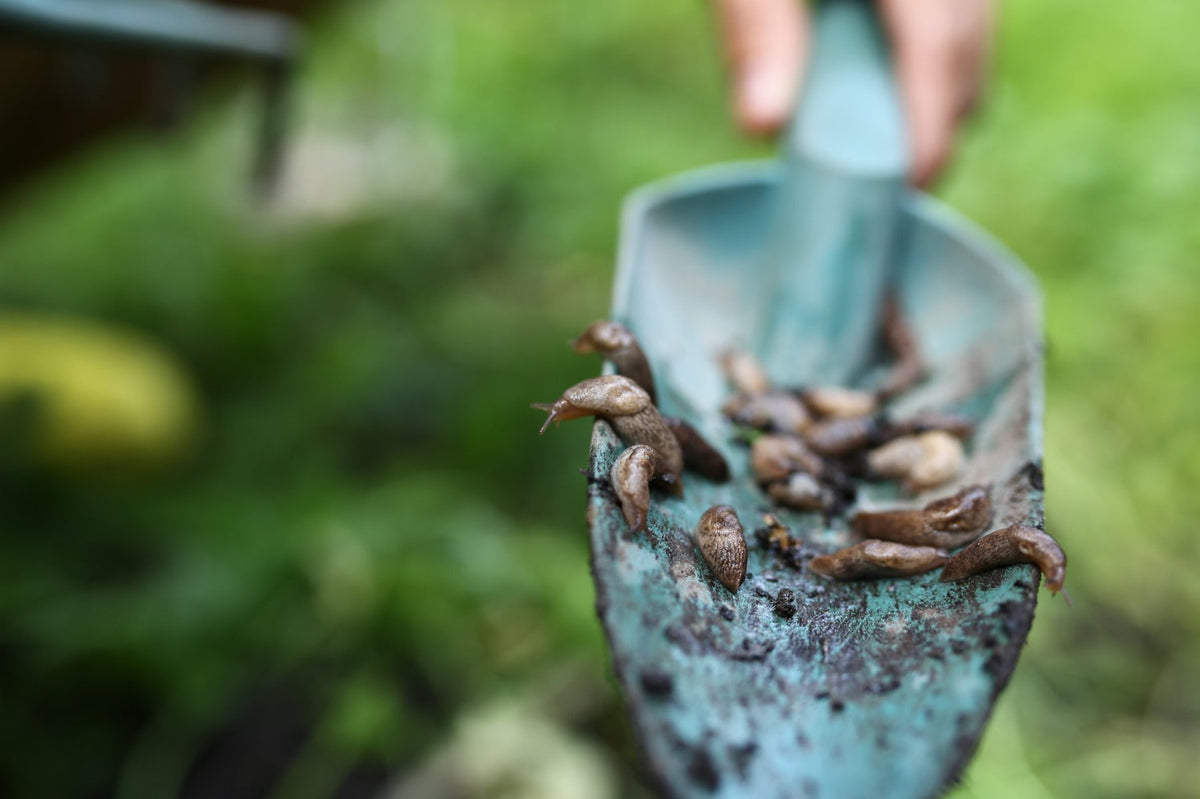
Combating snails: 10 facts and myths to keep them away
|
Tijd nodig om dit artikel te lezen: 3 min
|
Tijd nodig om dit artikel te lezen: 3 min
2024 will most likely go down in history as the year of the snail. Due to the wet spring and mild winter, we had to deal with the slimy creatures en masse, there will be a higher percentage of snails in your garden this year. But how do you combat them in an ecological way? And more importantly: which remedies work and which are now outdated? 10 facts and myths in a row.
But first this. Snails mate in spring and autumn. A single snail lays an average of 400 eggs , which hatch after 3 weeks. After 2 months, these specimens are also sexually mature and ready to lay hundreds of eggs again. A snail plague often starts in early spring, but can also continue into autumn. You can tackle the problem preventively , but you will also have to intervene curatively.
Opinions on copper rings are divided. It is said to be efficient for a minor infestation, but it is not very effective for a major infestation, as we learn from a survey among hobby gardeners. It is said that a small shock is given when they crawl over the piece of copper. The result; the snail leaves your plants alone. Unfortunately, this trick is not entirely watertight and does not guarantee a flawless path for your plants.
The snail has a deep aversion to sharp obstacles, once it has to go over them with its soft belly . Making a natural barrier with eggshells and oyster shells helps, but only in dry weather and with a small snail plague. As soon as it starts to rain more often and the plague starts to spread, this home and garden trick will not help to get rid of it either. Coffee grounds – or sludge – also helps to protect your plants against snails. Here, the more caffeine, the more efficient it works. But we must also qualify that. Not all snails are fooled by coffee grounds. Often they just go over them without mercy, as if nothing is wrong.
Fortunately, there is now such a thing as ecological slug pellets. They are very effective and are not harmful to other animals in the area. In contrast to the chemical products that used to be marketed, it is only the slugs that die and not the animals in and around your garden. Ecological slug pellets contain ferric phosphate, a substance that also occurs in nature and will affect the mid-crop gland of the animals. The attractant in the pellets ensures that they overeat, after which they withdraw and die after an average of 2 to 4 days. However, always respect the prescribed dose . You need very few pellets to tackle the slug problem.
The story of the snail and the beer is well known by now. However, it is not the beer (and therefore the alcohol) that attracts the slimy creatures, but the percentage of yeast that is present in that product. So if you prefer to drink your beer yourself, it is perfectly possible to dissolve a coffee spoon of dry yeast in lukewarm water to use the snail trap. You make a snail trap yourself by burying a cup or jar in the ground up to the edge. You then fill the cup halfway with a yeast-rich product and protect it from the rain. A roof tile is very suitable. You can clear them away the next day.
There are products available on the market that contain nematodes or eelworms. You usually find them in the form of an easy-to-use can, filled with millions of nematodes . Nematodes or eelworms are by far the biggest threat to snails. They parasitize the creatures quickly, take away their appetite and eventually cause them to die. It is a natural way to get rid of a snail plague. You dissolve the nematodes in a watering can with water, and then pour them over the soil surface. However, the nematodes only help at temperatures of an average of 12 to 15 °C, because that is when they are very active. So start tackling the snails early enough, but keep in mind the importance of a constant temperature . As long as the nematodes find snails, they stay alive, after that they die due to lack of a host.



